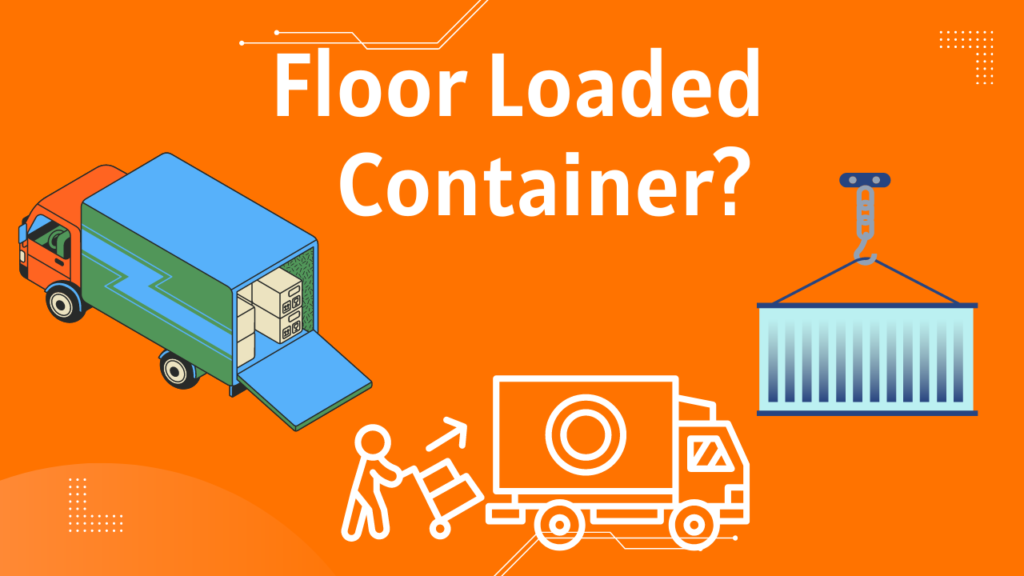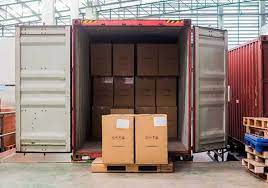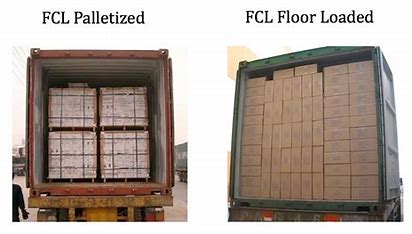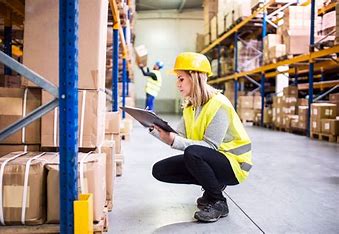
Shipping containers have become an essential part of moving goods from one place to another. The floor loaded container is one of the most popular types of containers used in the shipping industry. As the name suggests, a floor loaded container is a container where the cargo is loaded directly onto the floor of the container.
Types that can be floor loaded
Floor loading is a popular method of shipping goods, especially for large, bulky, or irregular shaped items. This method involves loading cargo directly onto the floor of a container, without the use of pallets or other types of packaging. This can save time and money, as it eliminates the need for additional handling and packaging materials.
One of the main advantages of floor loading is that it allows for maximum use of the available space in the container. This is particularly useful for large items that may not fit onto a pallet or into a standard container. Machinery, vehicles, and construction materials are all examples of items that can be floor loaded.
Another advantage of floor loading is that it can be a more secure method of shipping. By eliminating the need for pallets or other types of packaging, the cargo is less likely to shift or move during transit. This can help to prevent damage to the cargo and ensure that it arrives at its destination in good condition.
Perishable goods can also be floor loaded, as long as they are properly packaged and stored. For example, fruits and vegetables can be floor loaded in refrigerated containers, which can help to maintain their freshness and quality during transit.
In conclusion, floor loading is a versatile and efficient method of shipping that can be used for a wide range of cargo types. Whether you are shipping machinery, vehicles, construction materials, or perishable goods, floor loading can help to ensure that your cargo arrives at its destination safely and securely.
How to Properly Floor Load a Container

Properly loading a floor loaded container is crucial to ensure the safety and stability of the cargo during transit. A poorly loaded container can lead to damage of the cargo, loss of valuable items, and even accidents on the road. Here are some additional steps to take to ensure that your cargo is loaded properly:
- Plan ahead: Before loading the container, it’s important to plan ahead and decide on the best layout for your cargo. This will help ensure that the cargo is evenly distributed and that no single load is too heavy, which could create an imbalance in the container.
- Use pallets: Using pallets can help distribute the weight of the cargo evenly and make it easier to load and unload. It also helps to prevent damage to the cargo during transit.
- Stack the cargo properly: When stacking the cargo, it’s important to stack it in a way that distributes the weight evenly. The heaviest items should be placed at the bottom, with lighter items on top. This will help prevent the cargo from shifting during transit.
- Secure the cargo: Using corner posts, braces, and straps to secure the cargo firmly in place is crucial. This will prevent the cargo from moving during transit and ensure that it arrives at its destination safely.
- Label the cargo: Labeling the cargo can help ensure that it is loaded and unloaded properly. This will help prevent damage to the cargo and ensure that it arrives at its destination on time.
By following these additional steps, you can ensure that your cargo is loaded properly and arrives at its destination safely. Remember, taking the time to properly load your cargo is worth it in the long run and can save you time and money in the event of damage or loss.
Floor loaded container v/s palletized container

Containerization has revolutionized the way goods are transported across the globe. It has made it possible to transport large quantities of cargo in a safe and efficient manner. While floor loading is a common method of containerization, palletized containerization is also popular.
In a palletized container, the cargo is placed on pallets and then stacked inside the container. This method of containerization has several advantages over floor loading. Firstly, palletization allows for better use of space inside the container. The cargo can be stacked higher and more efficiently, which means that more goods can be transported in a single container. This is particularly useful for businesses that need to transport large quantities of goods.
Secondly, palletization makes it easier to handle cargo. The pallets can be loaded and unloaded using forklifts, which reduces the risk of damage to the cargo. This is especially important for fragile or delicate goods that need to be transported carefully.
However, floor loading comes in handy when the cargo is too large or heavy to be placed on pallets. In such cases, the cargo is simply loaded onto the floor of the container. This method of containerization is often used for heavy machinery, vehicles, and other large items that cannot be easily palletized.
It is worth noting that both floor loading and palletized containerization have their advantages and disadvantages. The choice between the two methods depends on the type of cargo being transported, the distance it needs to travel, and the budget of the business.
In conclusion, containerization has made it possible to transport goods across the globe in a safe and efficient manner. Whether you choose to use a floor loaded container or a palletized container depends on your specific needs and requirements. Regardless of the method you choose, it is important to ensure that your cargo is properly secured and protected during transit.
Where to Find Floor Loaded Containers
When it comes to transporting goods, floor loaded containers are a popular choice for many businesses. These containers offer a convenient and cost-effective way to move large volumes of cargo across long distances. But where can you find them?
One of the best places to look for floor loaded containers is at major ports and freight hubs around the world. These locations are often home to a wide range of shipping companies that offer various types of containers to suit different needs.
One such company is Maersk, a global leader in container shipping with a vast network of ports and terminals worldwide. Maersk provides a range of container solutions, including floor loaded containers, that are designed to meet the diverse needs of businesses of all sizes.
Another popular shipping company that offers floor loaded containers is MSC. With a presence in over 155 countries, MSC is one of the world’s largest container shipping companies. They offer a range of container types, including floor loaded containers, that can be customized to meet the specific needs of their customers.
APL is another reputable shipping company that provides floor loaded containers for businesses. With a focus on sustainability and innovation, APL is committed to providing reliable and cost-effective container solutions that meet the needs of their customers while minimizing their environmental impact.
CMA CGM is also a popular choice for businesses looking for floor loaded containers. With a network of over 755 offices in more than 160 countries, CMA CGM is one of the largest container shipping companies in the world. They offer a range of container types, including floor loaded containers, that are designed to meet the needs of businesses of all sizes.
When choosing a shipping company for your floor loaded container needs, it’s essential to consider factors such as experience, reputation, and safety. Look for a company with a proven track record of handling cargo of different types and ensuring safe transportation.
Overall, floor loaded containers are an excellent option for businesses looking to transport large volumes of cargo over long distances. With a range of reputable shipping companies offering these containers at major ports and freight hubs worldwide, finding the right solution for your business has never been easier.
Safety Considerations for Floor Loaded Containers

When it comes to floor loading containers, safety should always be a top priority. It’s crucial to ensure that the cargo is correctly balanced and secured before it can be shipped. Using appropriate packing materials and securing the cargo firmly in place can prevent damage during transportation. Additionally, it’s essential to comply with all safety regulations and guidelines set by the shipping companies and the regulatory authorities.
One of the most critical safety considerations when it comes to floor loaded containers is weight distribution. The weight of the cargo must be distributed evenly throughout the container to prevent any damage to the container or the cargo during transportation. Failure to distribute the weight evenly can result in the container tipping over or causing damage to other containers during transportation.
Another safety consideration is the use of appropriate packing materials. The packing materials used should be of high quality and sturdy enough to withstand the rigors of transportation. The use of inadequate packing materials can result in the cargo shifting during transportation, which can cause damage to the container and the cargo.
Securing the cargo firmly in place is also essential for safety. The cargo should be secured using straps, chains, or other appropriate securing devices. Failure to secure the cargo firmly in place can result in the cargo shifting during transportation, which can cause damage to the container and the cargo.
Compliance with all safety regulations and guidelines is crucial for the safe transportation of floor loaded containers. The regulatory authorities and shipping companies have set safety guidelines and regulations that must be followed to ensure the safe transportation of cargo. Failure to comply with these regulations can result in fines, penalties, or even legal action.
In conclusion, safety should always be a top priority when it comes to floor loaded containers. Ensuring that the cargo is correctly balanced and secured, using appropriate packing materials, and complying with all safety regulations and guidelines can prevent damage during transportation and ensure the safe arrival of the cargo at its destination.
Also checkout the importance’s of the Liftgate
How to Properly Load a Floor Loaded Container
Properly loading a floor loaded container requires careful planning and execution. The first step is to choose the appropriate container size and type based on the cargo’s weight, dimensions, and nature. The next step is to check the container’s condition and clean it before loading the cargo. After loading the cargo, it’s important to ensure that it’s evenly distributed and secured in place using appropriate packing, corner posts, braces, and straps.
What is palletizing?

Palletizing is the process of placing cargo on pallets to facilitate easy transportation and storage. Pallets provide a stable base for the cargo and allow for easier handling using manual or mechanical means. Pallets are typically made of wood, plastic, or metal and come in different sizes and shapes depending on the cargo’s requirements.
How to know the difference between floor loaded & palletized containers?
One of the easiest ways to distinguish between palletized and floor loaded containers is to look at how the cargo is placed inside the container. In a palletized container, the cargo is placed on pallets and stacked inside the container. On the other hand, in a floor loaded container, the cargo is loaded directly onto the container’s floor. Another key difference is that palletized containers are often used for smaller items, while floor loaded containers are typically used for larger or bulky items.
What is difference in floor loading using palletization?
Floor loading is a method of containerization where the cargo is loaded directly onto the container’s floor. The cargo is typically secured using corner posts, braces, and straps to prevent it from moving during transportation. Floor loading is a popular method of containerization for larger, bulkier items that cannot be transported using palletization.
Conclusion
In conclusion, floor loaded containers provide a reliable and convenient method of transporting large, bulky, and irregular shaped items across different parts of the world. Proper planning and execution during loading and transportation can help ensure the cargo’s safety and stability, prevent damage, and ensure timely delivery. Understanding the differences between floor loading and palletization can enable shippers to choose the most appropriate containerization method based on their cargo’s requirements, size, weight, and destination.
